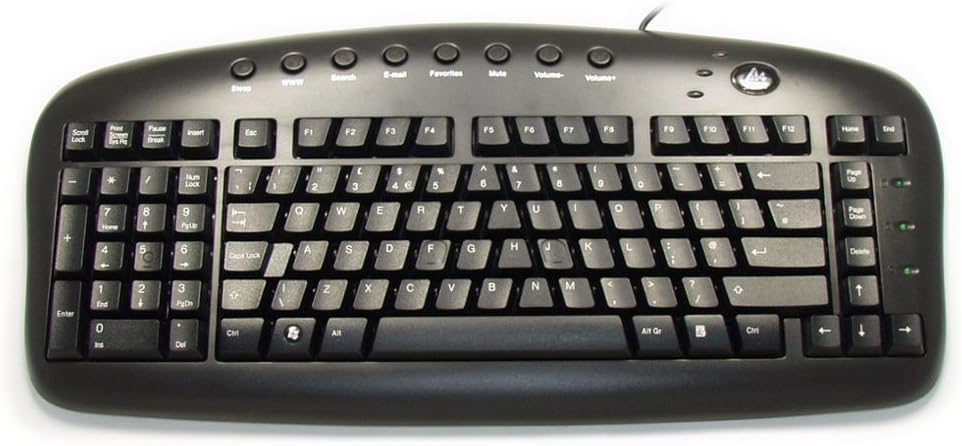About this deal
The displaced punctuation symbols (period and comma) end up at the edges of the keyboard, but every other symbol is in the same place as in the standard Swedish QWERTY layout, facilitating easier re-learning. The Alt-Gr key is required to access some of the punctuation symbols. This major design goal also makes it possible to "convert" a Swedish QWERTY keyboard to SVORAK simply by moving keycaps around.
TiPY combines all the functions of a conventional keyboard in a new concept for humans and their computers. And of course as with a right hander I can still map to the left side of the keyboard, too, if I need to. I can usually reach my index finger to the T, G and B keys no problem. Note If you couldn't make out any of the keys, such as the small punctuation keys they are worded below: Dvorak and Dealey's objective was to scientifically design a keyboard to decrease typing errors, speed up typing, and lessen typist fatigue. They engaged in extensive research while designing their keyboard layout. In 1914 and 1915, Dealey attended seminars on the science of motion and later reviewed slow-motion films of typists with Dvorak. Dvorak and Dealey meticulously studied the English language, researching the most used letters and letter combinations. They also studied the physiology of the hand. The result in 1932 was the Dvorak Simplified Keyboard. [15] Letters should be typed by alternating between hands (which makes typing more rhythmic, increases speed, reduces error, and reduces fatigue). On a Dvorak keyboard, vowels and the most used symbol characters are on the left (with the vowels on the home row), while the most used consonants are on the right.An IcelandicDvorak layout exists, created by a student at Reykjavik University. It retains the same basic layout as the standard Dvorak but features special Alt-Gr functions to allow easy usage for common characters such as "þ", "æ", "ö" and dead-keys to allow the typing of characters such as "å" and "ü". Mechanical Keys: This keyboard uses linear mechanical keys. An excellent investment for those who type daily and gamers. The keys require little force to press, which makes it easier on your fingers and hands. Without looking at the keyboard, you can identify where your hands should be positioned with your index fingers feeling for small bumps on the letters "F" and "J." For further information about these bumps, see: Why are there bumps on the F and J keyboard keys? Why should fingers be placed on home row keys? Will anything bad happen if I connect an internal SSD to a USB port via an external adaptor when the port doesn't have the wattage to fully power it? Liebowitz, Stan J.; Margolis, Stephen E. (2001). "The Fable of the Keys". Winners, Losers and Microsoft. Oakland, Calif.: Independent Inst. p.30. ISBN 978-0-945999-84-3.
Disposition de clavier francophone et ergonomique bépo". bepo.fr. Archived from the original on May 27, 2009 . Retrieved March 21, 2013. Hard drive retention: Hard drive retention is not available on models with a soldered hard drive, including XPS 9315 2in1, Chromebooks or Venue tablets, except the Venue 11 Pro. a b c Noyes, Jan (August 1988). "The QWERTY keyboard: a review". International Journal of Man-Machine Studies. 18 (3): 265–281. doi: 10.1016/S0020-7373(83)80010-8. Amiga operating systems from the 1986 version 1.2 onward allow the user to modify the keyboard layout by using the setmap command line utility with "usa2" as an argument, or later in 3.x systems by opening the keyboard input preference widget and selecting "Dvorak". Amiga systems versions 1.2 and 1.3 came with the Dvorak keymap on the Workbench disk. Versions 2.x came with the keymaps available on the "Extras" disk. In 3.0 and 3.1 systems, the keymaps were on the "Storage" disk. By copying the respective keymap to the Workbench disk or installing the system to a hard drive, Dvorak was usable for Workbench application programs.The layout standardized by the ANSI differs from the original or "classic" layout devised and promulgated by Dvorak. Indeed, the layout promulgated publicly by Dvorak differed slightly from the layout for which Dvorak & Dealey applied for a patent in 1932–most notably in the placement of Z. Today's keyboards have more keys than the original typewriter did, and other significant differences existed: You can play the octave notes separately if you have small hands. If you’re having trouble reaching an octave, try playing at the ends of the keys. The advantages to using WASD and Arrow Key configurations are non existent. You cannot reach the space bar, control, alt, shift and so on properly. It is also very uncomfortable, especially the WASD config. Why put yourself at a disadvantage? Polish propositions of a national keyboard layout smiliar to Dvorak were created in 1950s but weren't introduced due to a new version of Polish Norm in 1958 with modernized QWERTZ layout. [59] Romanian [ edit ] Although DSK is implemented in many [ citation needed] languages other than English, there are still potential issues. Every Dvorak implementation for other languages has the same difficulties as for Roman characters. However, other (occidental) language orthographies can have other typing needs for optimization (many are very different from English). Because Dvorak was optimized for the statistical distribution of letters of English text, keyboards for other languages would likely have different distributions of letter frequencies. Hence, non-QWERTY-derived keyboards for such languages would need a keyboard layout that might be quite different from the Dvorak layout for English.
Related:
 Great Deal
Great Deal 